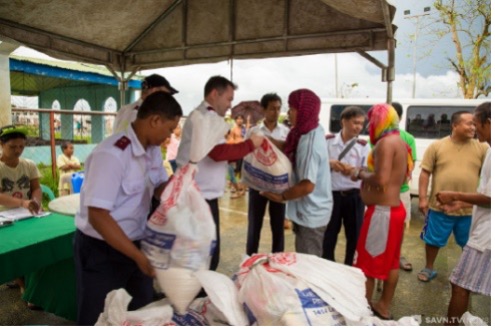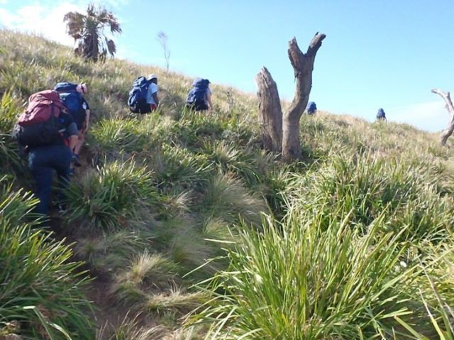


Sustainable Development Goal 10 aims to reduce inequalities within and among countries by the year 2030. The intention of this goal is to allow individuals in all countries to flourish by mitigating or nullifying the effects of financial and social discrimination and promoting inclusive policy-making.1
- Reduce income inequality by improving and sustaining income growth for the population living below the national averages.
- Promote equal opportunities for all by eliminating discriminatory practices and advocating for inclusive legislation.
- Encourage development assistance and investment in least developing countries, particularly through financial flow and foreign direct investment
- Promote social, economic, and political inclusion, irrespective of age, sex, disability, ethnicity, origin, economic status, etc…
- Facilitate safe migration policies to ensure the health and safety of migrants.




making those with disabilities one of the largest minority groups in the world.14 People with disabilities are often met with structural barriers inhibiting their full participation in society. This may include discriminatory healthcare policies, lack of access to transportation, and exclusion from education and employment. According to the World Health Organisation, under international human rights law countries have an obligation to address health inequity for persons with disabilities and states that disability inclusion is necessary to achieve the Sustainable Development Goals15


The World After COVID-19




Reducing Health Inequalities – Salvation Army Hospitals

The Salvation Army responds to health concerns in all 132 countries in which it is present, expanding access to healthcare. As part of the mission to ensure access to health services for all, The Salvation Army operates 172 health facilities, 38 hospitals, 124 health clinics, mobile clinics, and provides medical training in nursery, midwifery, and laboratory training schools.24
Reducing Education Inequality – Salvation Army Schools

The Salvation Army works to expand access to education, reducing education inequality, and as part of its mission, operates over 2,000 schools and educates over 500,000 students.25 Schools have the potential to shape young people's lives by ensuring they receive a quality education, providing them with tools and skills necessary to contribute to their communities and reduce income, education, and opportunity disparity. The Salvation Army also operates many special needs schools globally, providing education and health services to those with various disabilities.
Reducing Inequalities – Salvation Army Social Services

Various Salvation Army social services initiatives around the world work in harmony to provide a holistic approach to reducing inequalities for all. The Salvation Army’s health, employment, disability, education initiatives, and more work hand in hand in providing opportunities and vital resources that reduce inequalities, wherever there is a need.
Reducing Inequalities Between Countries – Salvation Army World Services Office

Established in 1977, The Salvation Army World Services Offices works to reduce inequalities between countries by investing in the financial, physical, and spiritual wellbeing of those in economically developing nations. Through fundraising, SAWSO engages in $57 million worth of projects that develop sustainable solutions to problems facing communities around the world.
Safe Migration – The Salvation Army in Ukraine
In the wake of conflict in Ukraine, The Salvation Army in the surrounding nations welcomed refugees with open arms, providing them with resources and support, easing their transition into their host communities.26 The Salvation Army has facilitated the shipment of relief supplies, hygiene kits, food, and provided emergency shelter for those who have been affected by the conflict.
Reducing Inequality for People with Disabilities
1 Reduced inequalities. The Global Goals. (n.d.). Retrieved January 31, 2023, from https://www.globalgoals.org/goals/10-reduced-inequalities/
2 Ibid.
3 The Statistics Division of the United Nations Department of Economic and Social Affairs. (2022). The Sustainable Development Goals Extended Report 2022. UN Stats. Retrieved January 31, 2023, from https://unstats.un.org/sdgs/report/2022/extended-report/Extended-Report_Goal-10.pdf
4 Ibid.
5 Global inequality. Inequality.org. (2023, January 19). Retrieved February 2, 2023, from https://inequality.org/facts/global-inequality/
6The Statistics Division of the United Nations Department of Economic and Social Affairs. (2022). The Sustainable Development Goals Extended Report 2022. UN Stats. Retrieved January 31, 2023, from https://unstats.un.org/sdgs/report/2022/extended-report/Extended-Report_Goal-10.pdf
7Ibid.
8United Nations. (2022, July). Progress towards the Sustainable Development Goals – Report of the Secretary General. Sustainable Development Goals. Retrieved October 28, 2022, from https://unstats.un.org/sdgs/
9Ibid.
10Ibid.
11Ibid.
12Ibid.
13https://data.unicef.org/sdgs/goal-10-reduced-inequalities/
14World Health Organization. (n.d.). Disability. World Health Organization. Retrieved April 6, 2023, from https://www.who.int/en/news-room/fact-sheets/detail/disability-and-health
15Ibid.
16The Statistics Division of the United Nations Department of Economic and Social Affairs. (2022). The Sustainable Development Goals Extended Report 2022. UN Stats. Retrieved January 31, 2023, from https://unstats.un.org/sdgs/report/2022/extended-report/Extended-Report_Goal-10.pdf
17 United Nations. (n.d.). Inequality – Bridging the Divide. United Nations. Retrieved February 6, 2023, from https://www.un.org/en/un75/inequality-bridging-divide
18The Statistics Division of the United Nations Department of Economic and Social Affairs. (2022). The Sustainable Development Goals Extended Report 2022. UN Stats. Retrieved January 31, 2023, from https://unstats.un.org/sdgs/report/2022/extended-report/Extended-Report_Goal-10.pdf
19The State of the Global Education Crisis. UNICEF. (2021, December 1). Retrieved February 10, 2023, from https://www.unicef.org/reports/state-global-education-crisis
20 Ibid.
21The Statistics Division of the United Nations Department of Economic and Social Affairs. (2022). The Sustainable Development Goals Extended Report 2022. UN Stats. Retrieved January 31, 2023, from https://unstats.un.org/sdgs/report/2022/extended-report/Extended-Report_Goal-10.pdf
22 Ibid.
23Ibid.
24International Health Services. The Salvation Army International - International Health Services. (n.d.). Retrieved February 17, 2023, from https://www.salvationarmy.org/ihq/health
25Schools. The Salvation Army International - Schools. (n.d.). Retrieved February 17, 2023, from https://www.salvationarmy.org/ihq/schools
26Russia-Ukraine War: The Salvation Army's response across Europe. The Salvation Army International. (n.d.). Retrieved February 28, 2023, from https://www.salvationarmy.org/ihq/russia-ukraine-war-2022
27 Youthlink:Skills-4-Life. salvationarmy.org.au. (n.d.). Retrieved March 31, 2023, from https://www.salvationarmy.org.au/youthlink/skills-4-life/


